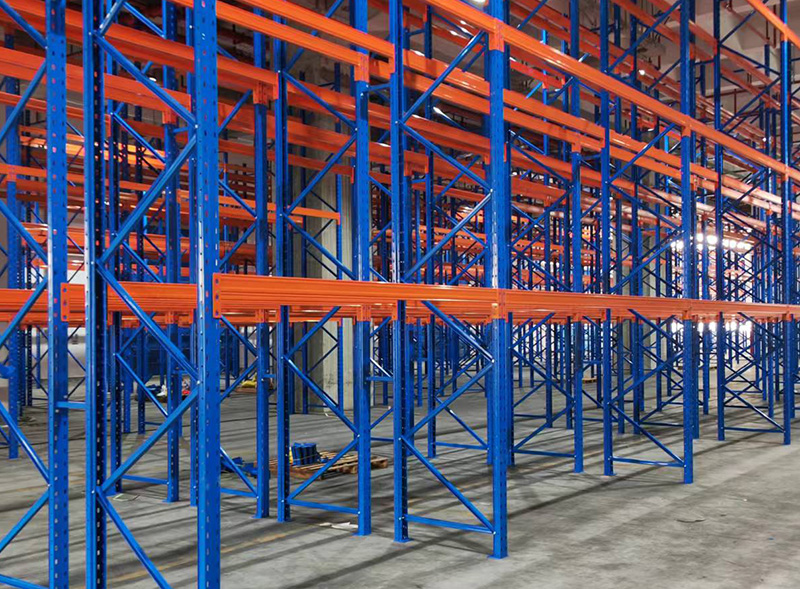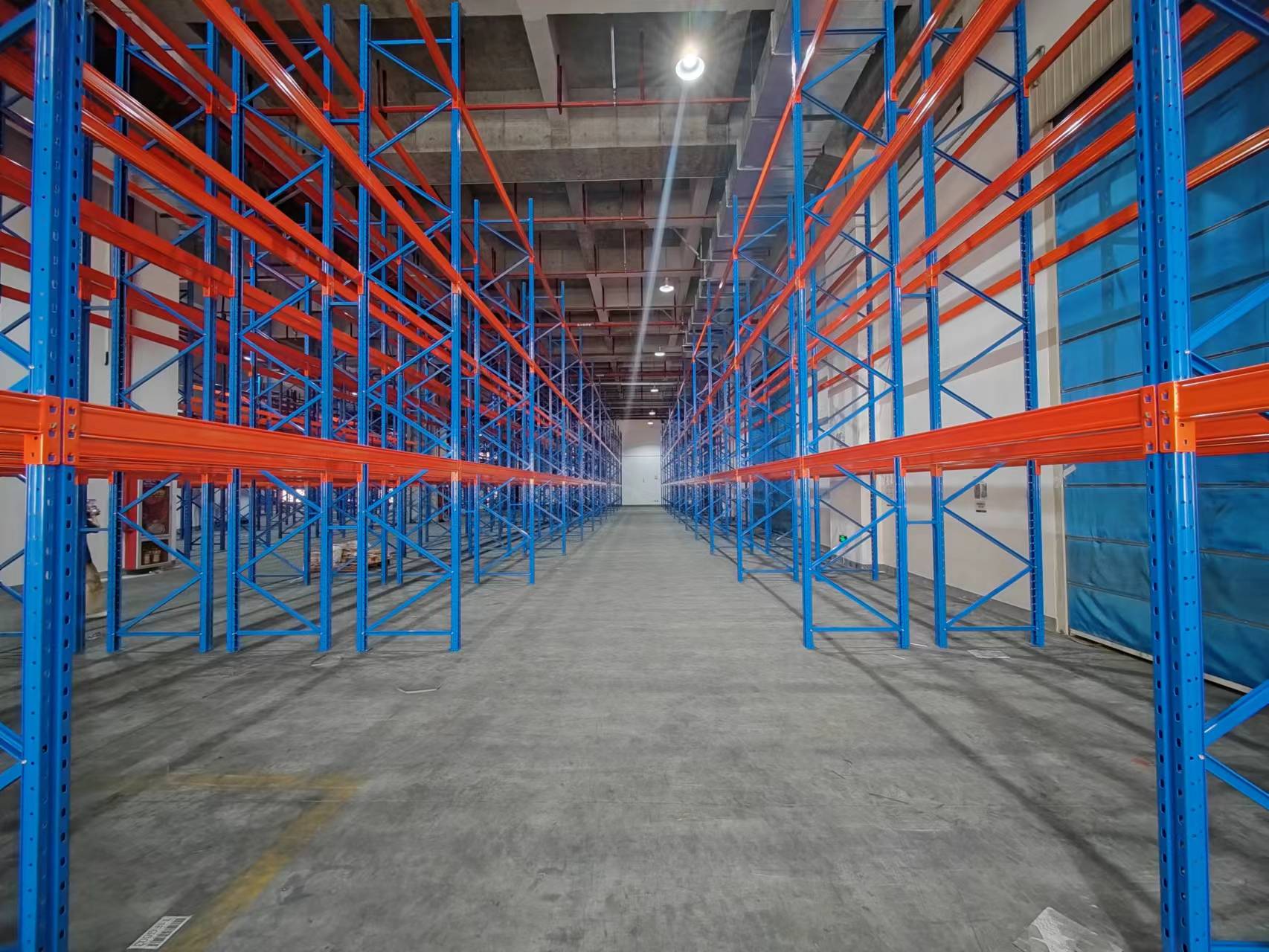In the relentless pursuit of warehouse optimization, palletized racks stand as an undisputed cornerstone. These robust, systematic storage solutions are engineered specifically to handle unit loads on pallets, forming the backbone of efficient distribution centers, manufacturing plants, and retail backrooms worldwide. Far more than simple shelving, palletized racks transform vertical space into accessible, organized, and safe inventory storage. Understanding their multifaceted advantages is crucial for any operation looking to streamline logistics and boost the bottom line. Let's delve into the five essential benefits that make palletized racks indispensable.

1. Unlocking Vertical Space: The Power of Height Utilization
The most fundamental and often most valuable advantage of palletized racks is their ability to capitalize on the often-underutilized vertical space within a warehouse. Unlike floor stacking, which is limited by stability and safety concerns (typically only 2-3 pallets high), palletized racking systems soar upwards.
Sky-High Density: By safely storing pallets multiple levels high – often constrained only by building clear height and forklift capabilities (easily 30+ feet) – palletized racks dramatically increase storage capacity without expanding the facility's footprint. This vertical density is essential in high-rent areas or when expansion is cost-prohibitive.
Cube Optimization: Warehouses pay for cubic space, not just square footage. Palletized racks ensure you are maximizing the value of every cubic foot by filling the building envelope efficiently. This directly translates to lower storage costs per pallet position.
Flexible Configuration: Beam levels can be adjusted relatively easily to accommodate different pallet heights and load sizes, ensuring optimal space utilization even as inventory profiles change. This adaptability prevents wasted vertical gaps between loads.
2. Streamlining Operations: Enhancing Accessibility & Workflow
Palletized racks are designed not just for storage, but for efficient material handling. Their structure directly facilitates smoother warehouse operations.
Direct Accessibility (Selective Racking): The most common type, selective palletized racking, allows immediate, direct access to every single pallet stored within the system. Forklifts can drive down clear aisles and retrieve or deposit any SKU without needing to move other loads. This supports First-In-First-Out (FIFO) and First-Expired-First-Out (FEFO) inventory management crucial for perishables or time-sensitive goods.
Reduced Travel Time: Well-designed palletized rack layouts with appropriately sized aisles minimize forklift travel distances between the dock, staging areas, and storage locations. This speeds up both put-away and order picking cycles.
Improved Picking Efficiency: For case picking operations, palletized racks can be integrated with carton flow systems or mezzanines. Even in full-pallet operations, organized racking with clear labeling drastically reduces the time spent searching for inventory.
Support for Automation: Palletized racking structures are often the foundation for automated storage and retrieval systems (AS/RS), very narrow aisle (VNA) systems, and shuttle systems, taking operational efficiency to even higher levels.
3. Fortifying Safety: Protecting People, Product, and Property
Safety is paramount in any warehouse environment, and properly installed and maintained palletized racks contribute significantly to a safer workplace compared to alternatives like floor stacking or poorly designed storage.
Structural Stability: Engineered to specific load capacities and installed according to manufacturer and industry standards (like RMI - Rack Manufacturers Institute), palletized racks provide a stable and predictable structure. This reduces the risk of catastrophic collapse inherent in unstable floor stacks.
Load Security: Beams and wire decking (where used) securely cradle pallets, preventing them from shifting, tipping, or falling during storage or when adjacent pallets are being moved. Properly designed racking also minimizes the risk of loads being dislodged by forklifts.
Clear Aisles and Visibility: Defined aisles within palletized racking layouts keep traffic organized, reducing the risk of collisions between forklifts or between forklifts and personnel. The open structure also generally improves visibility compared to dense block stacking.
Damage Prevention: By eliminating the need to unstack loads to reach bottom pallets (a major cause of product damage in floor stacking), palletized racks significantly reduce inventory damage. Pallets are also less likely to be crushed or deformed when stored properly on racks.
Compliance Foundation: A well-designed palletized rack system provides the framework for implementing other safety measures like rack protection posts (guardrails), column guards, and proper aisle marking, helping meet OSHA guidelines.

4. Driving Cost Efficiency: Maximizing ROI on Storage
While there is an upfront investment, palletized racks deliver substantial cost savings and a strong return on investment (ROI) over their lifespan through multiple channels:
Reduced Real Estate Costs: As covered in the space utilization benefit, storing more pallets in the same building footprint defers or eliminates the need for costly facility expansion or leasing additional space. This is often the single largest cost saving.
Lower Labor Costs: Faster put-away and picking cycles mean fewer labor hours are required to move the same volume of goods. Reduced travel time and easier access directly translate into labor savings.
Decreased Product Damage: Minimizing damage to inventory stored within palletized racks preserves profit margins that would otherwise be lost to shrink. Less damaged goods also mean fewer returns and associated handling costs.
Improved Inventory Control: Efficient access and organization reduce the likelihood of lost or misplaced inventory, leading to better stock accuracy. This prevents costly stockouts, overstocking, and expedited shipping fees.
Longevity and Durability: High-quality palletized racks, when properly maintained and not overloaded, have an exceptionally long operational lifespan – often decades. This spreads the initial investment over many years, making it highly cost-effective.
5. Offering Configurational Flexibility: Tailoring to Diverse Needs
The term "palletized racks" encompasses a surprisingly diverse family of systems, each designed to optimize for different priorities like density, selectivity, or inventory rotation. This flexibility ensures there's a racking solution for almost any application.
Selective Pallet Racking: The workhorse, offering direct access to every pallet. Ideal for warehouses with a large SKU count where quick access to all items is essential.
Double-Deep Racking: Effectively doubles storage density by storing pallets two deep on each side of the aisle. Sacrifices some selectivity (front pallet must be moved to access the rear) for significant space savings. Requires specialized forklifts (reach trucks with double-deep reach).
Drive-In/Drive-Thru Racking: High-density storage where forklifts drive directly into the rack structure itself. Ideal for high-volume storage of fewer SKUs (e.g., cold storage, bulk ingredients). Drive-In is LIFO (Last-In-First-Out); Drive-Thru allows FIFO access from both ends.
Push-Back Racking: Utilizes carts on inclined rails within each bay. When a new pallet is loaded, it pushes the existing pallets back. Provides LIFO inventory rotation but offers better selectivity than drive-in within the lane. Higher density than selective racking.
Pallet Flow Racking: Features inclined roller or wheel tracks within each lane. Pallets are loaded at the high end and flow by gravity to the picking face at the low end. Enforces strict FIFO inventory rotation and is excellent for high-throughput operations with perishable goods or date-sensitive products.
Mobile Pallet Racking: Entire rows of racks are mounted on motorized bases that move laterally on rails. Only one aisle is opened at a time, achieving ultra-high-density storage (close to 85% floor space utilization) while still providing selective access. Ideal for valuable or slow-moving inventory where space is extremely premium.
Palletized racks are far more than just metal structures; they are the strategic framework upon which efficient, safe, and cost-effective warehouse operations are built. From unlocking the immense potential of vertical space and streamlining material flow to enhancing safety protocols, driving down operational costs, and offering tailored solutions for diverse inventory needs, the benefits are profound and multifaceted.
Investing in the right palletized racking system, designed by qualified professionals and installed correctly, is an investment in the future competitiveness and profitability of any logistics operation. Whether optimizing an existing facility or designing a new distribution center, understanding and leveraging these five essential benefits of palletized racks is key to maximizing storage potential, operational agility, and overall supply chain success. They remain the proven, reliable backbone for storing unit loads efficiently in the modern industrial landscape.







